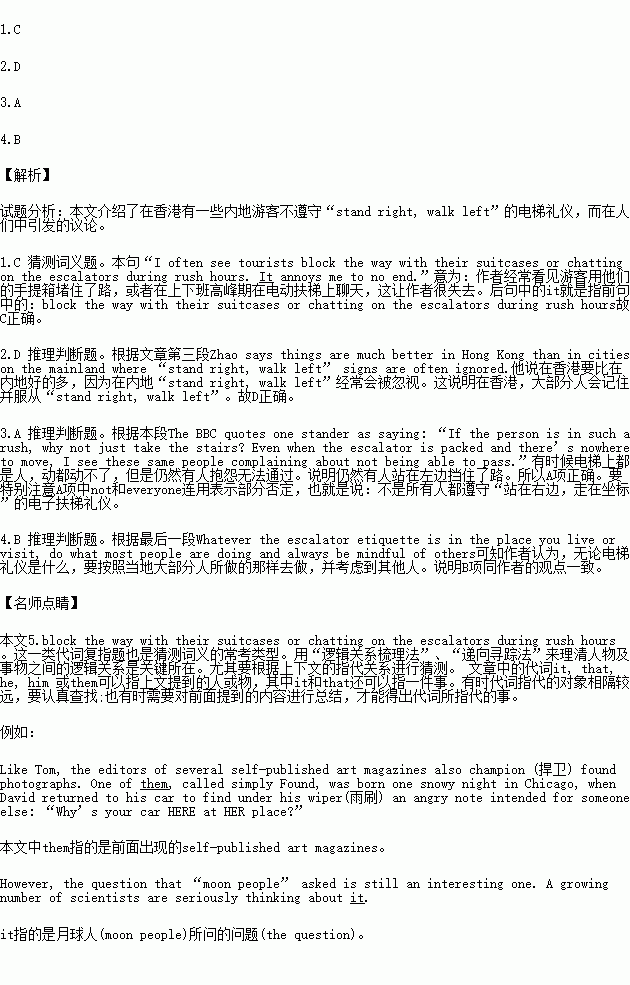题目内容
If you live in a big city, there are many thing to drive you crazy on your daily route, and it’s not just overcrowded subway trains.
Vicky Zhao is a mainlander working in Hong Kong. For her, one thing she can’t put up with is people standing on the wrong side of the escalator(自动扶梯) in subway stations. “Escalators help us move faster and save time. It isn’t a place to rest,” the 24-year-old says. “I often see tourists block the way with their suitcases or chatting on the escalators during rush hours. It annoys me to no end.”
Admitting she is not the patient type, Zhao says things are much better in Hong Kong than in cities on the mainland where “stand right, walk left” signs are often ignored.
The logic behind the “stand right, walk left” escalator etiquette(礼仪) seems obvious. Even though you may want to catch your breath while you’re transported up or down, you should still consider others and leave enough space for people in a hurry, so that they can run and catch the train.
Many cities’ escalators, including London’s and Beijing’s, use the “stand right, walk left” system to speed up the flow of people. (Australia is an exception and you should stand on the left side instead.) But some cities discourage people from moving on escalators out of safety reasons. In Hong Kong’s subway stations there are regular announcements asking people to “stand still” on escalators. Even so, most people in this fast-paced city observe the “stand right, walk left” etiquette.
But the people who stand on escalators defend themselves by telling the walkers not to be so impatient. The BBC quotes one stander as saying: “If the person is in such a rush, why not just take the stairs? Even when the escalator is packed and there’s nowhere to move, I see these same people complaining about not being able to pass.”
Whatever the escalator etiquette is in the place you live or visit, do what most people are doing and always be mindful of others: leave enough space between each other, don’t stay at the end of the escalator, and if someone is blocking your way, a simple “excuse me” is enough.
1.In the second paragragh, the underlined word It refers to______
A. the author’s living in the big city of Hong Kong.
B. being crowded on the subway trains in rush hours.
C. people’s blocking the way or chat on the escalators.
D. people’s standing on the right side resting.
2.When on the escalator, a majority of local people in Hong Kongg_______
A. stand still as the railway stations require.
B. ignore the “ stand right, walk left” signs
C. use the stairs instead of escalators.
D. follow the “stand right, wail left” etiquette.
3. What can be inferred from the 6th paragraph?
A. Not everyone follows the “stand right, walk left” etiquette.
B. The BBC is against the “stand right, walk left” etiquette.
C. People should be patient and take the stairs if possible.
D. People shouldn’t complain about the crowded escalators.
4. Which of the following statements is the writer’s opinion?
A. People should stand right no matter where they are.
B. People should do as the Romans do and consider others.
C. People should do as they like on the escalators.
D. People should be seriously criticized when they block the way.
 名校课堂系列答案
名校课堂系列答案
